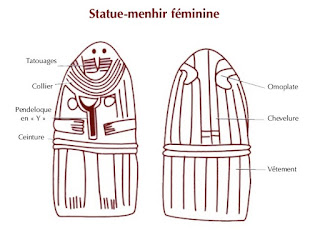Wednesday, August 22, 2018
Monday, July 16, 2018
Sunday, June 3, 2018
Sunday, May 27, 2018
Wednesday, October 18, 2017
Menhir, Dolmans and Cromlech Part 1
Menhir, Dolmans, and Cromlechs
A menhir (from Brittonic languages: maen or men, "stone" and hir or hîr, "long"), standing stone, orthostat, lith or masseba/matseva is a large upright standing stone. Menhirs may be found solely as monoliths, or as part of a group of similar stones.
A dolmen (/ˈdɒlmɛn/) is a type of single-chamber megalithic tomb, usually consisting of two or more vertical megaliths supporting a large flat horizontal capstone ("table"), although there are also more complex variants. Most date from the early Neolithic (4000–3000 BC). Dolmens were typically covered with earth or smaller stones to form a tumulus. In many instances, that covering has weathered away, leaving only the stone "skeleton" of the burial mound intact.
A menhir (from Brittonic languages: maen or men, "stone" and hir or hîr, "long"), standing stone, orthostat, lith or masseba/matseva is a large upright standing stone. Menhirs may be found solely as monoliths, or as part of a group of similar stones.
A dolmen (/ˈdɒlmɛn/) is a type of single-chamber megalithic tomb, usually consisting of two or more vertical megaliths supporting a large flat horizontal capstone ("table"), although there are also more complex variants. Most date from the early Neolithic (4000–3000 BC). Dolmens were typically covered with earth or smaller stones to form a tumulus. In many instances, that covering has weathered away, leaving only the stone "skeleton" of the burial mound intact.
Cromlech may refer to:
- Dolmen, a single-chamber megalithic tomb
- Dolni Glavanak Cromlech, an oval stone circle near Dolni Glavanak, Bulgaria
- Almendres Cromlech, the Cromlech of the Almendres megalithic complex, near Évora, Portugal
- Dinas Cromlech, a rock outcrop in the Llanberis Pass, Snowdonia, Wales
- Cromlech, Mechell, a place in Anglesey, Wales
Subscribe to:
Comments (Atom)



























